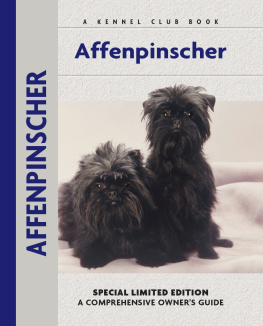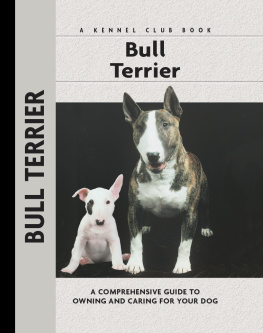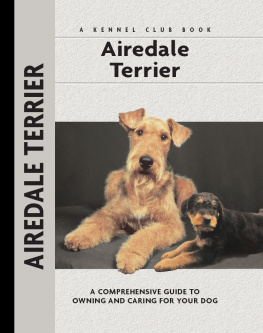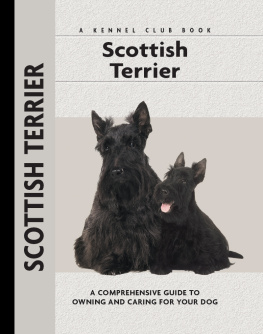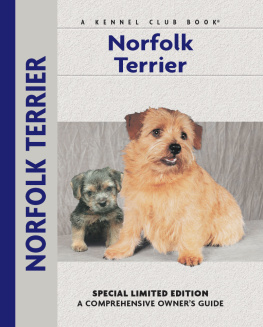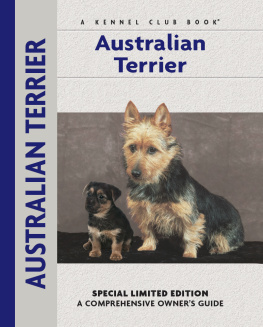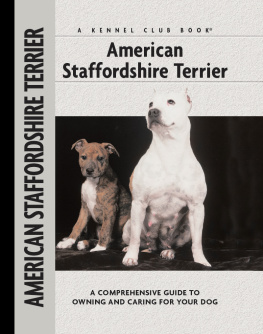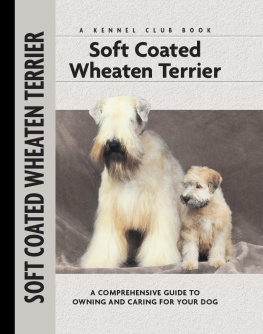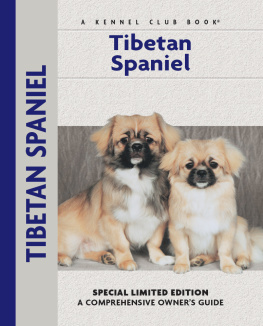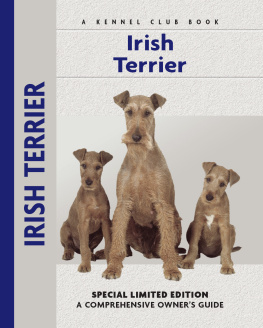Physical Characteristics of the Affenpinscher
(from the American Kennel Club breed standard)
Head: In proportion to the body, carried confidently with monkey-like facial expression.
Skull: Round and domed.
Ears: Cropped to a point, set high and standing erect; or natural, standing erect, semi-erect or dropped.

Neck: Short and straight.
Stop: Well-defined.
Eyes: Round, dark, brilliant and of medium size in proportion to the head.
Nose: Black.
Muzzle: Short and narrowing slightly to a blunt nose.
Chest: Moderately broad and deep.
Forequarters: Front angulation is moderate. Shoulderswith moderate layback. Elbowsclose to the body. Front legs straight when viewed from any direction. Pasterns short and straight. Feet small, round and compact with black pads and nails.
Back: Short and level.
Tail: May be docked or natural.
Hindquarters: Rear angulation is moderate to match the front. From the side, hindlegs are set under the body to maintain a square appearance. Hocksmoderately angulated.
Coat: Dense hair, rough, harsh, and about 1 inch in length on the shoulders and body. The longer hair on the head, eyebrows and beard stands off and frames the face to emphasize the monkeylike expression.
Height: At the withers is 9.5 inches to 11.5 inches.
Color: Black, gray, silver, red, black and tan or belge are all acceptable.
Contents
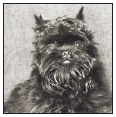
With its origins in Germany as a hunter of small vermin, the Affenpinscher today enjoys life primarily as a pet and companion. Trace the breeds development, including a brush with near-extinction, and meet the dedicated fanciers who ensured this enchanting toy breeds future around the world.
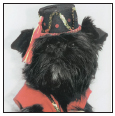
Meet the monkey terrier, a mustached performer with a love of the spotlight, dressed in a smart wire coat. Learn about the Affens personality, from his penchant for comedic antics to his stubborn streak, and find out if youre the right kind of owner for the breed. Also learn about health concerns in the breed of which owners should be aware.
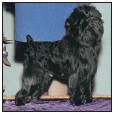
Learn the requirements of a well-bred Affenpinscher by studying the description of the breed as set forth in the American Kennel Clubs breed standard. Both show dogs and pets must possess key characteristics as outlined in the breed standard.
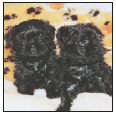
Find out about how to locate a well-bred Affenpinscher puppy. Discover which questions to ask the breeder and what to expect when visiting the litter. Prepare for your puppy-accessory shopping spree. Also discussed are home safety, the first trip to the vet, socialization and solving basic puppy problems.
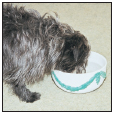
Cover the specifics of taking care of your Affenpinscher every day: feeding for the puppy, adult and senior dog; grooming, including coat care, ears, eyes, nails and bathing; and exercise needs for your dog. Also discussed are the essentials of dog identification.
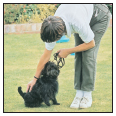
Begin with the basics of training the puppy and adult dog. Learn the principles of house-training the Affenpinscher, including the use of crates and basic scent instincts. Get started by introducing the pup to his collar and leash and progress to the basic commands. Find out about obedience classes and other activities.
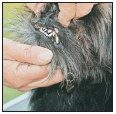
By Lowell Ackerman DVM, DACVD
Become your dogs healthcare advocate and a well-educated canine keeper. Select a skilled and able veterinarian. Discuss pet insurance, vaccinations and infectious diseases, the neuter/spay decision and a sensible, effective plan for parasite control, including fleas, ticks and worms.

Step into the center ring and find out about the world of showing pure-bred dogs. Here are the basics of AKC conformation, including how shows are organized and whats required for your dog to become a champion. Also presented are things to think about if you want to try showing and how to get started.
K ENNEL C LUB B OOKS A FFENPINSCHER
ISBN 13: 978-1-59378-335-8
eISBN 13: 978-1-62187-029-6
Copyright 2009 Kennel Club Books An Imprint of I-5 Press A Division of I-5 Publishing, LLC
3 Burroughs, Irvine, CA 92618 USA
Cover Design Patented: US 6,435,559 B2 Printed in South Korea
All rights reserved. No part of this book may be reproduced in any form, by photostat, scanner, microfilm, xerography or any other means, or incorporated into any information retrieval system, electronic or mechanical, without the written permission of the copyright owner.
10 9 8 7 6 5 4 3 2
Photography by:
Alverson Photographers, Animal World Studio, Ashbey Photography, Janet Ashbey, Nancy Baybutt, Mary Bloom, Kim Booth, Paulette Braun, Alan and Sandy Carey, Wendy Clark, David Dalton, Isabelle Franais, Gay Glazbrook, Michael Graat, Earl Graham Studios, Bruce and Jeane Harkins, Holloway Photography, JC Photography, Carol Ann Johnson, Bill Jonas, Klein Photography, Kohler Photographers, Elizabeth Muir-Chamberlain, Debrah H. Muska (Animal Images), Nancy Spelke (Custom Dog Designs), R. Strempski, Charles Tatham and Alice van Kempen.
Illustrations by Patricia Peters.
The author is indebted to the following individuals for their contribution to the text of this book: Jo Ann White, Bardi McLennan and Nona Kilgore Bauer.

Here is Cosmos, the top-winning Affenpinscher in the history of the breed. Formally hes Ch. Yarrows Super Nova, bred by Beth Sweigart and Letisha Wubbel and owned by Dr. and Mrs. William Truesdale.

EARLY HISTORY OF THE BREED
The Affenpinscher has its origin in Germany. The progenitor of the breed was probably a rough-coated little ratter that survived in the central European countries by its clever personality and its rodent-killing abilities. The Flemish artist Jan Van Eyck (13901441) included in his painting The Marriage of Giovanni Arnolfini and Giovanna Cenami a scruffy terrier-type dog, placed facing the audience between the newlyweds. This is an example of the type of dog that probably was the ancestor of both the Brussels Griffon and the Affenpinscher. Albrecht Durer (14711525) from Nuremberg, Germany included a small dog in several of his woodcuts that suggest the existence of this Long-haired Dwarf Terrier. Seventeenth-century painter Gabriel Metsu (16291667) portrayed a little dog that looks very much like our contemporary Affenpinscher in his celebrated work
Next page
